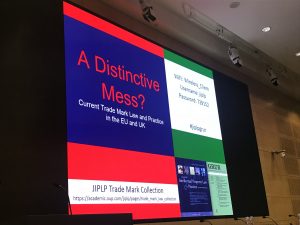On the 23 October 2017, the European Committee of Social Rights handed down its decision in International Federation for Human Rights (FIDH) v. Ireland Complaint No. 110/2014. The decision is available here. On the main ground, the Committee found that Irish housing law violates the right of families to adequate housing under Article 16 of the Revised European Social Charter. The declaration is notable in several respects and is significant, both nationally and internationally. This blog post will engage with some of the issues raised by the complaint however it will also offer some insight into the way this complaint came about and how back in 2012, as a recent graduate, I came to be involved in the complaint.
The Revised European Social Charter
The collective complaint system relates to the Revised European Social Charter, which was established in 1961, and revised in 1996, by the Council of Europe to support the (more famous) European Convention of Human Rights (ECHR). Broadly speaking, while the ECHR enshrines civil and political rights, the European Social Charter enumerates social and economic rights. The logic behind the Social Charter can be explained by borrowing a line from Franklin Delano Roosevelt. In 1944, Roosevelt outlined, in relation to the proposed second Bill of Rights which sought to enumerate economic and social rights in the United States, that “individual freedom cannot exist without economic security and independence”. The European Social Charter sets out human rights to education, health, housing, etc. While 43 out of the 47-member States of the Council of Europe are parties to either the Charter or the Revised Charter, it has not been incorporated into domestic law in the way that the ECHR has been. The rights are not directly justiciable, however the considerable jurisprudence of the Social Charter is nonetheless of growing influence in informing the development of European human rights norms.
The collective complaint process
By international standards, the rights enumerated by the European Social Charter are remarkably sophisticated. Much of this can be attributed to the system of enforcement which through a system of national reports by ratifying states and, in particular, a novel collective complaint system, generates a growing corpus of human rights standards. Certain national and international bodies including national tenants/landlord’s associations, international human rights agencies, etc. have locus standi to bring a collective complaint alleging that some aspect of national law violates the human rights of a collection of individuals in that country. Once a complaint is submitted, it must be deemed admissible (a relatively straightforward threshold) and then it proceeds to the European Committee of Social Rights which, after a hearing, makes a decision on the merits of the case. There is no national tenant’s association in the Republic of Ireland, instead this complaint was brought via the FIDH (International Federation for Human Rights). The moving force behind the whole effort was a group of local authority tenants who were concerned at the conditions of local authority housing and the lack of effective legal remedies governing housing condition and repair. The complaint was organised by Community Action Network (CAN) with the support of Ballymun Community Law Centre, and The Centre for Housing Law, Rights and Policy at NUI Galway. The complaint was funded by the Free Legal Aid Clinic and the Irish Human Rights & Equality Commission.
Getting involved in co-operative research projects
My involvement stems from my work with Dr Padraic Kenna at The Centre for Housing Law, Rights and Policy. I had graduated from the LLB programme at NUI Galway in the summer of 2011 and had taken Dr Kenna’s Housing Law, Rights and Policy module in my final year. This module combined cutting edge research led teaching with a real practical edge and really spurred my academic interest in this area of the law. This experience was exceptionally useful in putting together a successful application when a graduate position opened up on a housing law and policy human rights project in 2012. I was responsible for working with colleagues in Dublin and Galway to identify areas of Irish housing law which were potentially in violation of the Charter and to collect and organise materials which would support the development of a collective complaint. The main issues including the poor housing conditions of local authority housing and in particular the tenant’s lack of effective rights in relation to housing condition, repair, security, dispute resolution etc.
The difficulties in making a complaint
Part of the difficulty for tenants in bringing the complaint was the lack of meaningful statistics. The last state survey of local authority housing condition was in 2002. The complaint was only made possible by tenants systematically collecting and cataloguing evidence of poor housing for years. This was a huge effort but was vital to the ultimate success of the complaint on the main ground. The achievement of CAN is even more remarkable given that there is no state support of tenants’ associations in Ireland, unlike most of the countries of the EU where national tenants’ associations play a vital role in developing renting law & policy e.g. Sweden, Italy, etc. At the end, I had helped put together a skeleton draft which focused on a wide range of areas including local authority housing, as well as homeless legislation, and the housing law governing traveller accommodation. This was the end of my involvement at this stage and I then took up a Tenlaw research fellowship at the University of Southampton. However, I became involved once again in 2016, after the complaint had been deemed admissible and the state had responded by making a submission on its merits. Together with Dr Padraic Kenna, I helped draft the response to the State’s arguments.
The decision on the merits
In 2017 the Committee issued a decision finding that Irish housing law violates the right of families to adequate housing under Article 16 of the European Social Charter. While the Committee found a violation on the main ground i.e. inadequate housing conditions, the decision was disappointing in some respects, most notably in relation to the lack of effective legal remedies available to tenants. The difficulties facing local authority tenants are acute. For local authority tenants, their landlord is also the regulator of housing standards. Because the local authority is legally incapable of serving enforcement notices on itself, it is effectively impossible for local authority tenants to seek enforcement of the statutory housing quality standards. This puts local authority tenants at a remarkable disadvantage relative to private tenants who not only can seek enforcement of these standards by the local authority, they also have access to the low cost and relatively quick dispute resolution framework of the residential tenancies board. Because local authority tenants are in theory able to take their landlord to court over poor housing conditions, the Committee were prepared to reject the argument that local authority tenants were denied effective remedies. However, given the high costs involved in pursuing legal action and the general lack of legal aid available to tenants, this reasoning is somewhat unreal and the highly disappointing. Following the decision, the State must submit a report outlining what actions have been taken to address the violations identified in this complaint.
Comment
Throughout my time working on the complaint, I had the opportunity to meet with local authority tenants and listen to their views and contributions. This was remarkably insightful, and the contributions of tenants played a major role in directing the arguments made and also supporting those arguments. One of the recurring themes of the meetings I attended, was the sense of how disempowered local authority tenants were made to feel by Irish housing law in various respects. While the collective complaint system is imperfect, it can provide a valuable means for drawing attention to, and forcing recognition, of the real difficulties experienced by many households. The European Social Charter provides an exceptionally useful framework for evaluating national legal standards and seeking to develop best practice. Looking back on my experience working on the project, I feel incredible fortunate to have worked with such an exceptional team of tenants, community organisers, housing professionals and academics. My advice to recent graduates, or those interested in working in this field, is to get involved in these types of co-operative projects wherever possible. While not essential, it can be extremely helpful to have studied modules in the field of housing law, renting law, human rights etc. Exploring the modules options available and making contact with academics involved in those modules can be exceptionally helpful in identifying research opportunities which are off the beaten track.
The author: Mark Jordan is a lecturer in Land Law at the University of Southampton. For more information see here.



 his
his  st Instance (Tribunale di Firenze) issued an important and interesting decision [not yet available], which has been widely reported by newspapers in Italy [eg
st Instance (Tribunale di Firenze) issued an important and interesting decision [not yet available], which has been widely reported by newspapers in Italy [eg  The blog will serve as a forum of more informal discussions for the high-quality work of our staff and students: feel free to comment, get in touch, and be part of our vibrant community!
The blog will serve as a forum of more informal discussions for the high-quality work of our staff and students: feel free to comment, get in touch, and be part of our vibrant community!